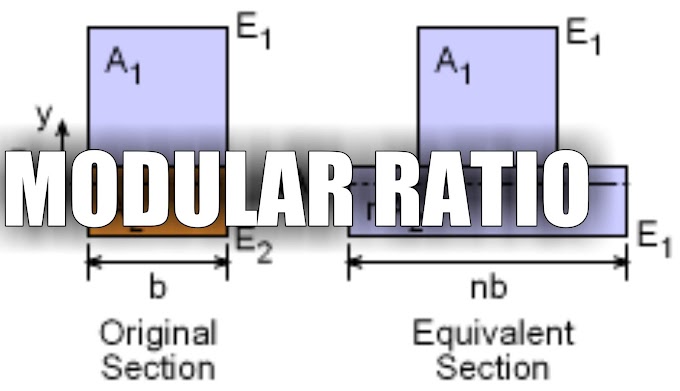
Elasticity
It is the property by virtue of which a material deformed under the load is enabled to return to its original dimension when the load is removed.
- If a body regains completely its original shape then it is called a perfectly elastic body.
- Elastic limit marks the partial breakdown of elasticity beyond which removal of load results in a degree of permanent deformation.
- Steel, Aluminium, Copper, may be considered to be perfectly elastic within a certain limit.
Plasticity
The characteristics of the material by which it undergoes inelastic strain beyond those at the elastic limit is known as plasticity.
- This property is particularly useful in the operation of pressing and forging When large deformation occurs in a ductile material loaded in the plastic region, the material is said to undergo plastic flow.
Ductility
It is the property that permits a material to be drawn out longitudinally to a reduced section, under the action of tensile force.
- A ductile material must possess a high degree of plasticity and strength.
- Ductile material must have a low degree of elasticity.
- This is useful in wire drawing.
Brittleness
It is a lack of ductility Brittleness implies that it can not be drawn out by tension to a smaller section.
- In brittle material, failure take place under load without significant deformation.
- Ordinary Glass is nearly ideal brittle material.
- Cast iron, concrete, and ceramic material are brittle material.
Malleability
It is the property of a material which permits the material to be extended in all direction without rupture.
- A malleable material posses a high degree of plasticity, but not necessarily great strength.
Toughness
It is the property of the material that enables it to absorb energy without fracture.
- Modulus of toughness U, = shaded area
- It is desirable in the material which is subjected to cyclic or shock loading.
- It is represented by the area under the stress-strain curve of the material up to fracture.
- Bend test used for common comparative test of toughness.
Hardness
It is the ability of a material to resist indentation or surface abrasion.
- The Brinell hardness test is used to check the hardness.
where P= Standard load
D = Diameter of steel ball (mm)
d = Diameter of indent (mm)
Strength
This property enables the material to resist fracture under load.
- This is the most important property from design point of view.
- Load required to cause fracture, divided by area of the test specimen, is termed as ultimate strength.
Creep
Creep is a permanent deformation which is recorded with the passage of time at constant loading It is plastic deformation (permanent and non-recoverable) in nature
- Note: The temperature at which creep is uncontrollable is called Homologous Temperature.
Fatigue
Due to cyclic or reverse cyclic loading fracture failure may occur if total accumulated strain energy exceeds the toughness. Fatigue causes rough fracture surfaces even in ductile metals.
Resilience
It is the total elastic strain energy that can be stored in the given volume of metal and can be released after unloading.
- It is equal to the area under the load-deflection curve within the elastic limit.







0 Comments